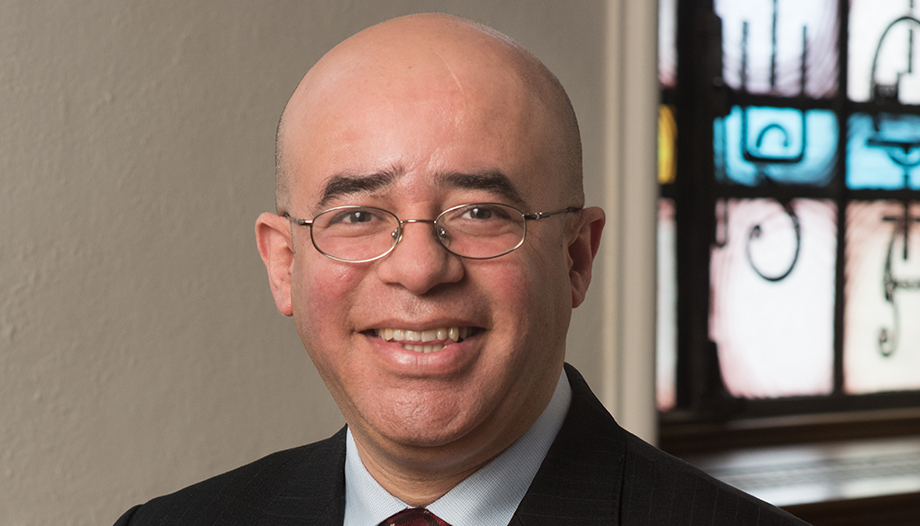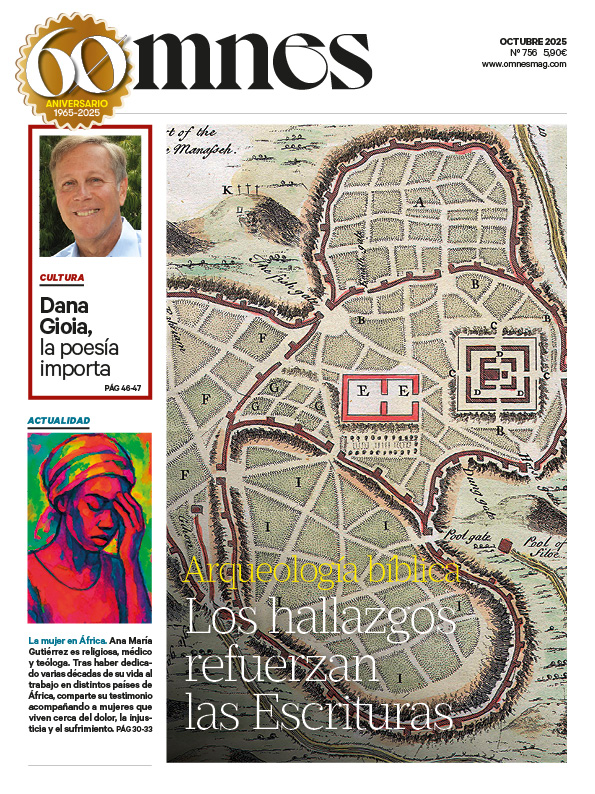According to a study conducted by the United States Conference of Catholic BishopsThe Hispanic community represents the great majority of Catholics in the country. Aware of this reality, the U.S. bishops have launched a national plan to embrace the "Hispanic moment" that the Church in the United States is experiencing.
Given the presence of laity of Hispanic origin, 99 % of the dioceses have some parish that celebrates Mass in Spanish. However, the presence of Hispanic-oriented ministry is very low. This is one of the elements that the bishops' National Plan seeks to improve in order to better serve the needs of Catholics in the dioceses.
The survey published by the Episcopal Conference shows that there is still much to be done, an idea with which Hossfman Ospino, PhD in Theology, agrees. In his studies, Dr. Ospino has researched the impact of the Hispanic community in parishes and schools, so he frequently participates in any type of discussion that has to do with the inclusion of Hispanic Catholics.
In this interview with Omnes, Ospino takes an x-ray of the "Hispanic moment," pointing out the strengths and weaknesses of the Bishops' Conference's plans in recent years and explaining the impact that Hispanic culture has on the Catholic Church.
Why is it so important at this historic moment for the U.S. bishops to make a specific plan for Hispanic ministry?
-First of all, it should be noted that the work the bishops are doing with the Hispanic community should have begun 100 years ago. The Hispanic population in the United States has been growing, especially since the 1960s. Every ten years the Hispanic population in the United States doubles, and in the 1960s there were close to six million Latinos living in this country. Today we are between 63 and 64 million.
Most of these Latinos, especially immigrants, identify ourselves as Catholics. Of course, it is expected that the Catholic community in the United States The pastoral plan for Hispanic-Latino Ministry for the year 2023 is not the first one to do so. In fact, in 1986 a plan was also written that was the fruit of what is called the Third National Encuentro of Hispanic Ministry and was published in 1987.
This was a pastoral plan that for the first time in the history of the country was made to better respond to and accompany the Hispanic community. It was in effect for nearly 35 years and it was time to renew it. Now we are using the experience of the Fifth National Encuentro de Pastoral Hispana to take up some of the points and propose a renewed plan.
What strengths and weaknesses do you see in the pastoral plans for Hispanic ministry proposed by the U.S. Conference of Catholic Bishops?
-On a positive note, we must recognize that it is of great value that ecclesial structures are looking at the potential of the Hispanic community, not only as a community to be served, but as a community that has much to offer in the process of ecclesial renewal and the building of Catholic communities in the United States.
The Hispanic population is very young, with a median age of 29. The Hispanic community is also very dynamic, especially at the migrant level. We have Catholic experiences from all over the Spanish-speaking world that coincide in this country. People are very excited to come here and have the opportunity to live and practice their faith.
The pastoral plan highlights urgent tasks, such as attention to youth. 94 % of Latino youth were born in the United States. The pastoral plan highlights the role of the family, the importance of leadership formation, the need for priests and consecrated men and women, etc. I think that something very important is that this plan proposes a framework for organizing pastoral ministry at different levels.
In terms of constructive criticism, it seems to me that it is a very long plan and that it does not allocate economic resources to move forward. It is very difficult to move forward with a plan in which people are asked to do things but without allocating or facilitating the resources needed to carry out the actions. I think that was one of the challenges of the pastoral plan that was published in 1987. The vision was very interesting, but in the end the implementation falls to the local level and many dioceses are bankrupt. Many communities that serve Hispanic Catholics are also poor communities, and the Hispanic community as such does not have a lot of financial resources. Therein lies the great challenge.
The other constructive criticism I would make is that much of the new pastoral plan repeats the obvious. It highlights evangelization, formation, youth... These are things that parishes already do and there was no need for a plan to tell parishes that they need to pay attention to those aspects. In that sense, the pastoral plan is a bit repetitive.
However, I believe that the positive outweighs the negative, because it is true that the pastoral plan gives us a point of reference for organizing the Hispanic Ministry.
What contributions does the Hispanic community have that enrich the life of the Catholic Church in the United States?
-Right now, about 40-45 % of all Catholics in the United States are Hispanic. If the Hispanic community were to disappear, the Catholic Church in the country would literally be reduced by half. The presence of Hispanics is already renewing, it gives life to the Church.
One of the contributions is youth. The Hispanic community in the U.S. Catholic Church has an average age of 29 years, while the average age of English-speaking European-American Catholics is 55 years.it is clear that the potential of Hispanic youth and children is impressive.
In any parish where there is Hispanic ministry, the vast majority of baptisms, first communions, confirmations and youth activities are focused in a special way on the Hispanic community. We can say that this injects an air of new, young and hopeful life into a Euro-American Catholic Church that is structurally aging and has its difficulties in moving forward.
In many parts of the United States, Catholic parishes, schools and hospitals are closing. However, in places where the Hispanic community is welcomed or present, there are signs of life, renewal and growth. I think this is a great opportunity to build Church.
Apart from that, there is the energy and wisdom of the pastoral agents in the Hispanic communities. They have theologians, professionals with many gifts and many people who have the capacity to contribute to start and sustain projects.
In the "Hispanic moment" there is a movement of renewal that if the institutional Church dares to embrace it will be renewed. However, it must be recognized that there are many sectors of the Catholic Church that still do not adjust to the idea that the Hispanic community is growing or that the U.S. Church is going to be more and more Hispanic. But if we do not adapt, we run the risk of losing a whole generation of Catholics who do not find their place to be Church by not being welcomed.
What indications are there in the current pastoral plan of a better understanding of the Hispanic Catholic community?
-I tend not to look at these aspects from the point of view of the hierarchy. For me, the hierarchy is generally focused on the programmatic aspects and on strengthening the institution. At the hierarchical level I don't see much change, although it is true that now there is, for example, more diversity.
The pastoral plan is the fruit of Hispanic communities discerning what is needed for people of faith, not necessarily of the Bishops' Conference. The changes we are seeing are the fruit of a change in context. More than half of the Hispanics in the United States were born in this country and this means that the Church must change its fields of action to adapt to the current situation.
In light of this, we have gone from a Hispanic Ministry that was largely focused on serving the Hispanic community, to a Ministry that serves the Hispanic community and the rest of the Church. For example, Latino priests no longer exclusively serve Hispanics, but serve the entire parish. That shows a change of mentality.
How do you do ministry to a particular community, such as the Hispanic community, without fostering division among believers of different ethnicities and backgrounds?
-There was a time when there was a lot of emphasis on separate ministries and segregation of communities. When there is pastoral segregation, there is segregation of resources. From the 1940s on, there has been an effort especially at the local level for each diocese to decide how to handle pastoral service to different groups.
The trend has been to create multicultural parishes. This implies that parish staffs have to develop a set of intercultural competencies, such as speaking several languages or knowing how to invest resources in such a way that all groups benefit from them. This requires an open vision at the pastoral level that goes beyond the separation of groups.
What cannot be denied is that poorer parishes have fewer resources. This is the Achilles heel of multicultural pastoral care. There are parishes with more than 50 pastoral agents, while in another parish there is only the pastor and two other people. We must be aware that this reality affects the way in which pastoral work is carried out.
Has Hispanic ministry been discussed in the U.S. synod process and what conclusions have you reached?
-The processes of the meetings that are the fruit of the pastoral plan are themselves synodal processes. They involve consultation and dialogue. The pastoral plan for Hispanic Ministry is the fruit of a synodal effort that accompanied the Fifth National Encuentro for Hispanic Ministry.
The bishops of the United States have repeatedly said and recognized that the Hispanic community, in its way of discerning its presence and pastoral action, does so in a synodal manner. In Latin American countries this synodal process has been going on for a long time.
Likewise, I think the Hispanic community has advanced in these synodal processes in a very humble way. Many of the communities are poor, they have no political or economic influence. But they have the power of the Holy Spirit and that has allowed them to create synodal spaces for dialogue in which there is no expectation of economic or institutional interests, but rather a sincere desire to learn how to create a better Church.







